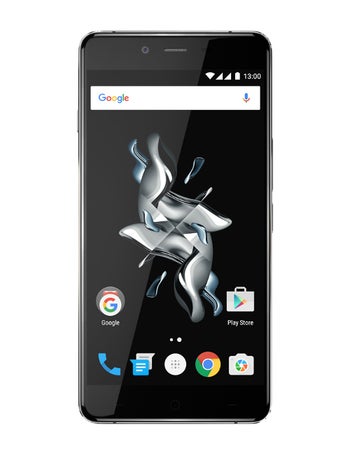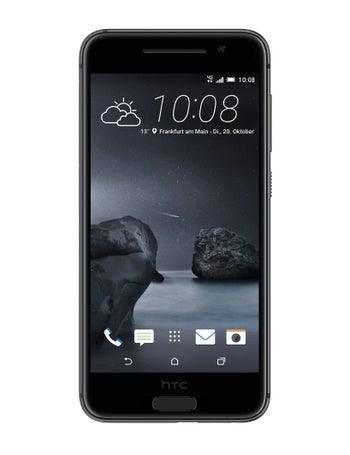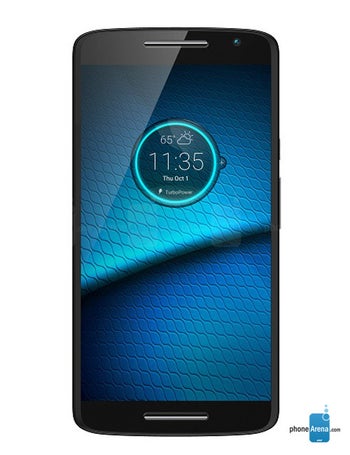OnePlus X vs HTC One A9 vs Motorola DROID MAXX 2: specs comparison

|
|
|
|
| OnePlus X | HTC One A9 | Motorola DROID MAXX 2 |
Design
| Dimensions | ||
|---|---|---|
| 5.51 x 2.72 x 0.27 inches 140 x 69 x 6.9 mm |
5.74 x 2.79 x 0.29 inches 145.75 x 70.8 x 7.26 mm |
5.83 x 2.95 x 0.43 inches 148 x 75 x 10.9 |
| Weight | ||
| 4.87 oz / 138.0 g | 5.04 oz / 143.0 g | 5.96 oz / 169.0 g |
| Materials | ||
| Back: Glass Frame: Metal |
Back: Metal | |
| Resistance | ||
| Splash | ||
| Biometrics | ||
| Fingerprint (touch) | ||
| Features | ||
| Notification light | ||
| Keys | ||
| Right: Volume control, Lock/Unlock key | Right: Volume control, Lock/Unlock key | Right: Volume control, Lock/Unlock key |
| Colors | ||
| Black | Gold, Gray, Silver, Red | Black, White |
Display
| Size | ||
|---|---|---|
| 5.0-inch, 71.28% screen-to-body | 5.0-inch, 66.17% screen-to-body | 5.5-inch, 74.61% screen-to-body |
| Type | ||
| AMOLED | AMOLED | TFT |
| Resolution | ||
| 1920x1080px, 441 PPI | 1920x1080px, 440 PPI | 1920x1080px, 402 PPI |
| Colors | ||
| 16 777 216 | 16 777 216 | |
| Protection | ||
| Corning Gorilla Glass 3 | Corning Gorilla Glass 3 | Corning Gorilla Glass 3 |
Hardware
| System chip | ||
|---|---|---|
| Snapdragon 801 | Snapdragon 617 8952 | Snapdragon 615 8939 |
| Processor | ||
| Quad-core 2300 MHz Krait 400 |
Octa-core 1500 MHz ARM Cortex-A53 | Octa-core 1700 MHz ARM Cortex-A53 |
| GPU | ||
| Adreno 330 | Adreno 405 | Adreno 405 |
| Memory | ||
| 3GB (LPDDR3)/16GB | 3GB/32GB 2GB/16GB |
2GB/16GB |
| Storage expansion | ||
| microSDXC up to 128 GB | microSDXC up to 2000 GB | microSDXC up to 128 GB |
| OS | ||
| Android (6.0 Marshmallow, 5.1 Lollipop) | Android (7.0 Nougat, 6.0 Marshmallow) | Android (7.0 Nougat, 6.0 Marshmallow, 5.1 Lollipop) |
Battery
| Type | ||
|---|---|---|
| 2525 mAh, Li - Polymer | 2150 mAh, Li - Ion | 3630 mAh, Li - Ion |
| Charging | ||
| Qualcomm Quick Charge 3.0 | Qualcomm Quick Charge 2.0 | |
Camera
| Rear | ||
|---|---|---|
| Single camera | Single camera | Single camera |
| Main camera | ||
| 13 MP (CMOS image sensor, PDAF) Aperture size: F2.2 |
13 MP (Sapphire crystal lens cover, OIS, Autofocus, BSI sensor) Aperture size: F2.0 | 21 MP (PDAF) Aperture size: F2.0 |
| Flash | ||
| LED | Dual LED | Dual LED |
| Video recording | ||
| 1080p, 720p (120 fps) Time-lapse video, Video calling, Video sharing | 1080p (30 fps) Hyperlapse, Video calling, Video sharing | 1080p (30 fps) EIS, Video calling, Video sharing |
| Front | ||
| 8 MP | 4 MP Video capture: 1080p |
5 MP |
Connectivity & Features
| Bluetooth | ||
|---|---|---|
| 4.0 | 4.1 | 4.0 |
| WLAN | ||
| b,g,n 802.11 b, g, n | a,b,g,n,ac,dual-band 802.11 a, b, g, n, ac |
a,b,g,n,dual-band 802.11 a, b, g, n |
| USB | ||
| microUSB, USB 2.0 | microUSB, USB 2.0 | microUSB, USB 2.0 |
| Sensors | ||
| Accelerometer, Gyroscope, Hall (for flip covers), Ambient light sensor, Proximity sensor | Accelerometer, Gyroscope, Compass, Ambient light sensor, Proximity sensor | Accelerometer, Compass, Ambient light sensor, Proximity sensor |
| Hearing aid compatible | ||
| M3/T3 | ||
| Location | ||
| GPS, A-GPS, Glonass, BeiDou | GPS, A-GPS, Glonass | GPS, A-GPS |
| Other | ||
| Tethering, Computer sync, OTA sync | NFC, Tethering, Computer sync, OTA sync | NFC, Tethering, Computer sync, OTA sync |
Multimedia
| Headphones | ||
|---|---|---|
| 3.5mm jack | 3.5mm jack | 3.5mm jack |
| Speakers | ||
| Earpiece, Loudspeaker | Earpiece, Loudspeaker | Earpiece, Loudspeaker |
| Features | ||
| Album art cover, Background playback | Album art cover, Background playback | Album art cover, Background playback |
| Screen mirroring | ||
| DLNA,Wireless screen share | Wireless screen share | |
| Radio | ||
| FM | FM | |
| Additional microphone(s) | ||
| Noise cancellation | Noise cancellation | |
Cellular
| LTE Bands | ||
|---|---|---|
| 1, 3, 5, 7, 8, 20 | 1, 3, 5, 7, 8, 20, 28 | 2, 3, 4, 5, 7, 13, 20 |
| TDD Bands | ||
| 38, 40 | 38, 40, 41 | |
| 3G Bands | ||
| 5, 8, 2, 1 | 5, 8, 2, 1 | 5, 8, 2, 1 |
| Data Speed | ||
| LTE, HSPA, HSUPA | LTE-A Cat 7 (300/100 Mbit/s), HSDPA+ (4G) 42.2 Mbit/s, HSUPA 5.76 Mbit/s, UMTS | LTE Cat 3 (100/50 Mbit/s), HSPA, HSUPA, UMTS |
| Dual SIM | ||
| Yes | ||
| SIM type | ||
| Nano SIM | Nano SIM | Nano SIM |
| HD Voice | ||
| Yes | ||
Phone Features
| Notifications | ||
|---|---|---|
| Haptic feedback, Music ringtones (MP3), Polyphonic ringtones, Vibration, Flight mode, Silent mode, Speakerphone | Haptic feedback, Music ringtones (MP3), Polyphonic ringtones, Vibration, Flight mode, Silent mode, Speakerphone | Haptic feedback, Music ringtones (MP3), Polyphonic ringtones, Vibration, Flight mode, Silent mode, Speakerphone |
| Other features | ||
| Voice dialing, Voice commands, Voice recording | Voice dialing, Voice commands, Voice recording | Voice dialing, Voice commands, Voice recording, TTY/TDD |
Regulatory Approval
| FCC approval | ||
|---|---|---|
| Date approved: Oct 02, 2015 FCC ID value: NM82PQ9100 | Date approved: Jul 20, 2015 FCC ID value: IHDT56UB2 | |
| Measured SAR | ||
| Head: 1.11 W/kg Body: 1.11 W/kg |
Head: 0.76 W/kg Body: 0.59 W/kg Simultaneous Transmission: 1.00 W/kg Wireless Router: 0.59 W/kg |
Head: 0.46 W/kg Body: 0.10 W/kg Simultaneous Transmission: 1.45 W/kg Wireless Router: 0.20 W/kg |
Availability
| Officially announced | ||
|---|---|---|
| Oct 29, 2015 | Oct 27, 2015 | |
| Prices (MSRP) | ||
| $249 | €269 | $500 | $384 |
See the full
OnePlus X vs HTC One A9 vs Motorola DROID MAXX 2 specs comparison
or compare them to other phones using our
Phone Comparison tool
Follow us on Google News















Things that are NOT allowed:
To help keep our community safe and free from spam, we apply temporary limits to newly created accounts: